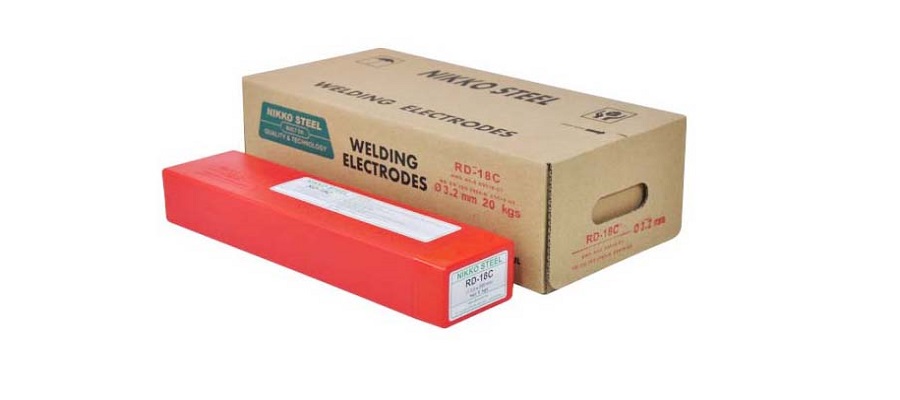LOW HYDROGEN - IRON POWDER ELECTRODE FOR WELDING LOW ALLOY FERRITIC STEELS USED FOR SEMI-CRYOGENIC WORK
RD-18C

CLASSIFICATION
AWS A5.5 E8018-C1 | EN ISO 18275-A E 55 6 Z2Ni B
PRODUCT DESCRIPTION
The design emphasis of the chemically basic flux is engineered to ensure the optimum weld metal properties demanded by the specification are fully met. The basic flux containing the appropriate alloying elements with a controlled balanced addition of iron powder, is extruded onto a high purity ferritic core wire with a blend of silicates that ensures both coating strength and a coating resistant to subsequent moisture absorption.
WELDING FEATURES OF THE ELECTRODE
The chemical nature of the flux together with a significant proportion of iron powder ensures maximum deposition efficiency without detracting from its ability to be used in all positions except vertical down. Overall the arc is very stable, slag detachability is good and metal recovery is some 115% with respect to the core wire
APPLICATIONS AND MATERIALS TO BE WELDED
C-Mn and low alloy steel plate, pipe forgings and castings used extensively for service at cryogenic temperatures, eg: LT50. BS 1501-224 Grade 490B Plate. ASTM A333 Grade 6 Pipe. ASTM A350 Grades LF1/LF2 Forgings. ASTM A352 Grade LC2 Castings. Maximum stress relief temperatures should be 620 °C (for 1 hour)
WELDING AMPERAGE AC and DC
OTHER DATA
Electrodes that have become damp should be re-dried at 150oC for 1 hour